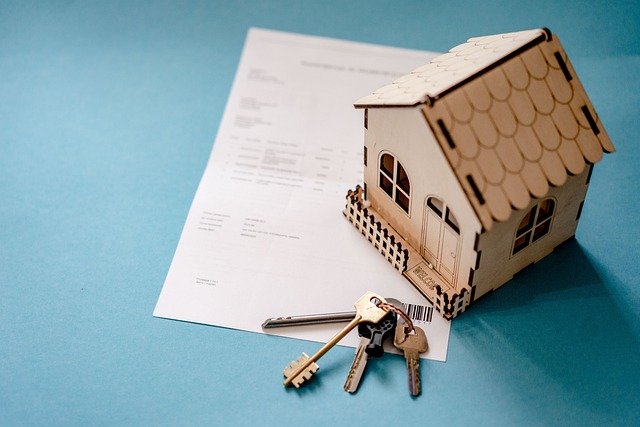Mortgage Options with Poor Credit History: What You Should Know
Navigating the mortgage landscape can be challenging, especially for those with a less-than-stellar credit history. However, having poor credit doesn't necessarily mean homeownership is out of reach. This article explores the options available for potential homebuyers with poor credit, common requirements, steps to improve approval chances, and the documentation typically needed when applying for a mortgage.

What are the common requirements for a poor credit mortgage?
When applying for a mortgage with poor credit, lenders typically have stricter requirements to mitigate their risk. These often include:
-
Higher down payments: Lenders may require 10-20% or more of the home’s purchase price upfront.
-
Higher interest rates: To compensate for the increased risk, interest rates are usually higher than those offered to borrowers with good credit.
-
Debt-to-income ratio: Lenders often look for a ratio of 43% or lower, meaning your monthly debt payments should not exceed 43% of your gross monthly income.
-
Stable employment: A consistent work history, typically two years or more in the same field, is often required.
-
Explanation of credit issues: Be prepared to provide a written explanation for past credit problems and how you’ve addressed them.
What steps can improve the chances of mortgage approval?
Improving your chances of mortgage approval with poor credit requires proactive steps:
-
Check your credit report: Review for errors and dispute any inaccuracies.
-
Pay down existing debts: Reducing your debt-to-income ratio can significantly improve your application.
-
Save for a larger down payment: A substantial down payment can offset some of the risks associated with poor credit.
-
Consider a co-signer: A co-signer with good credit can strengthen your application.
-
Explore government-backed loans: FHA, VA, or USDA loans often have more lenient credit requirements.
-
Work with a mortgage broker: They can help you find lenders more willing to work with poor credit borrowers.
What documents are typically requested by lenders?
When applying for a mortgage with poor credit, be prepared to provide extensive documentation:
-
Proof of income: Recent pay stubs, W-2 forms, and tax returns for the past two years.
-
Bank statements: Usually for the past 2-3 months, showing your savings and regular income deposits.
-
Employment verification: Contact information for current and past employers.
-
Rent payment history: Proof of on-time rent payments can be beneficial.
-
Explanation letters: Detailed accounts of past credit issues and steps taken to resolve them.
-
Asset documentation: Statements for any investments, retirement accounts, or other assets.
-
Gift letters: If receiving help with the down payment, a letter stating the money is a gift, not a loan.
Which mortgage options are available for poor credit borrowers?
Several mortgage options cater to borrowers with poor credit:
-
FHA loans: Insured by the Federal Housing Administration, these loans accept credit scores as low as 500 with a 10% down payment, or 580 with 3.5% down.
-
VA loans: For eligible veterans and service members, these loans have no minimum credit score requirement set by the VA.
-
USDA loans: Designed for rural and suburban homebuyers, these loans have no set minimum credit score, though 640 is preferred.
-
Conventional loans with private mortgage insurance (PMI): Some lenders offer conventional loans to borrowers with credit scores as low as 620, with PMI to offset the risk.
-
Portfolio loans: Some lenders keep these loans in-house, allowing for more flexible credit requirements.
What are some unique considerations for poor credit mortgages?
When pursuing a mortgage with poor credit, keep these factors in mind:
-
Higher overall costs: Due to higher interest rates, you’ll pay more over the life of the loan.
-
Stricter lending criteria: Approval may be contingent on factors beyond just credit score, such as larger cash reserves or lower debt-to-income ratios.
-
Limited loan options: You may not qualify for certain types of mortgages or terms.
-
Potential for predatory lending: Be cautious of lenders offering “guaranteed approval” or unusually high interest rates.
-
Importance of shopping around: Different lenders may have varying criteria for poor credit borrowers, so compare multiple offers.
How do poor credit mortgage options compare?
When considering poor credit mortgage options, it’s essential to compare the available programs:
| Loan Type | Minimum Credit Score | Down Payment | Other Requirements |
|---|---|---|---|
| FHA Loan | 500-579 | 10% | 580+ for 3.5% down |
| VA Loan | No set minimum | 0% | Military service required |
| USDA Loan | No set minimum (640 preferred) | 0% | Property must be in eligible rural area |
| Conventional with PMI | 620 | 3-20% | Higher rates, PMI required |
| Portfolio Loans | Varies by lender | Varies | Often require larger down payments |
Prices, rates, or cost estimates mentioned in this article are based on the latest available information but may change over time. Independent research is advised before making financial decisions.
In conclusion, while obtaining a mortgage with poor credit presents challenges, it’s not impossible. By understanding the requirements, improving your financial standing, and exploring various loan options, you can increase your chances of securing a mortgage and achieving homeownership. Remember to carefully consider the long-term costs and implications of any mortgage offer before making a decision.






